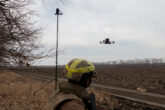July 05, 2017
Defense Problems as People Problems: Mattis's Human Capital Challenge
Secretary of Defense Jim Mattis’s arrival in the Pentagon in late January was to launch an era of intra-Pentagon harmony — familiar face, familiar knife hands, well-known to both the E-ring and the most distant forward operating bases.
But the Department of Defense is an unwieldy, complex beast, and, as former Secretary Ash Carter indicated to Congress, can’t be governed on autopilot even with the best intentions. From a polished, secured office overlooking the Potomac, it’s easy for secretaries of defense to be disconnected from their vast human enterprise, spanning continents but starting with the men and women just outside their door. To succeed in his role, Mattis must give serious attention to how he utilizes his immediate staff. But to excel and leave a worthy legacy for his successors, he should use his position to invest in all civilian human capital under his purview.
Read the full piece on War on the Rocks.
More from CNAS
-
Defense / Transatlantic Security
When Defense Becomes Destruction: Austria-Hungary’s Mistake and Ukraine’s RiskThis article was originally posted on War on the Rocks. The southeastern Polish city of Przemyśl, with its elegant 19th century Habsburg-era train station, remains one of the ...
By Franz-Stefan Gady
-
Defense / Transatlantic Security
Ukraine’s Catch-22 MomentThis article was originally published in the Financial Times. In Joseph Heller’s wartime classic, Catch-22, the protagonist Yossarian seeks out the US army surgeon Doc Daneeka...
By Franz-Stefan Gady
-
CNAS Insights | Budgetary Own Goals Undermine “Speed and Volume”
On November 7, Secretary of Defense Pete Hegseth laid out a plan to overhaul the Department of Defense’s (DOD’s) acquisition system. Placing an emphasis on delivering new capa...
By Philip Sheers, Carlton Haelig & Stacie Pettyjohn
-
Drones: Who Is Making the New Weapons of War?
From Ukraine and Russia to Gaza and Sudan, drones have become a key weapon of war. Which companies are making them, and profiting from this rapidly expanding but controversial...
By Stacie Pettyjohn




